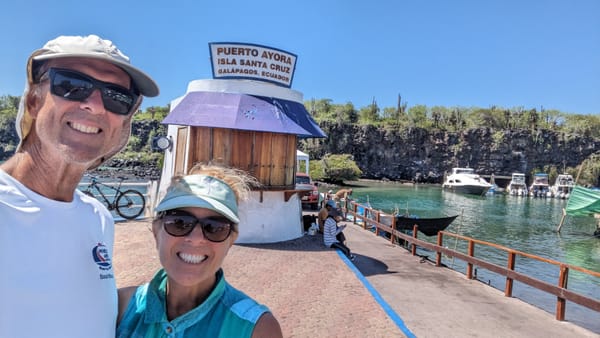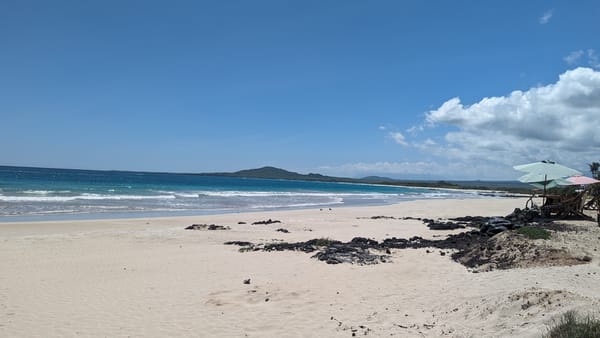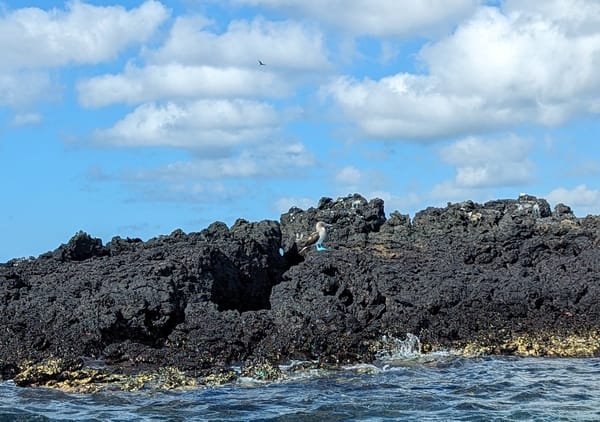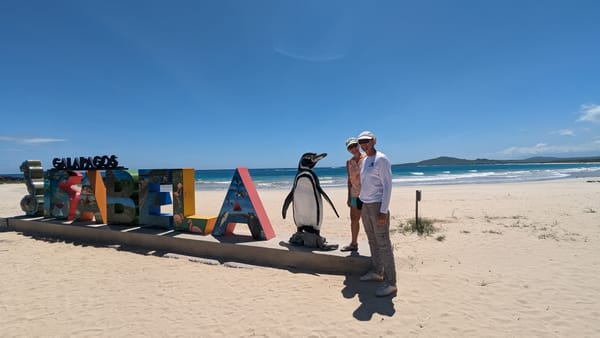Transiting the Panama Canal
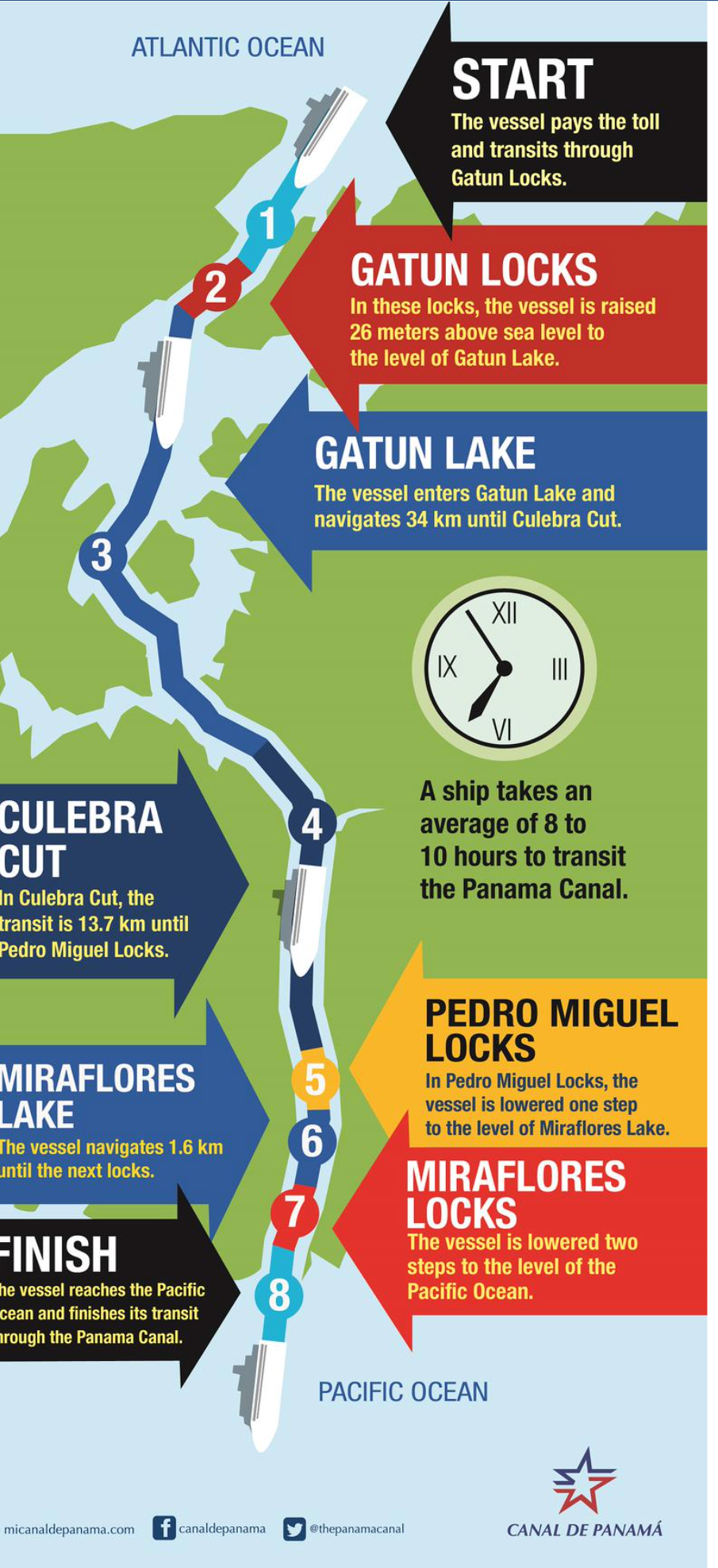
February 11, 2024 Sunday
Providentially, all the repairs were completed yesterday afternoon (bottom painted, weld repair and
re-enforcements, electrical work with the radar and autopilot controller, hydraulic steering gasket replacement at the helm,…). This gave us a few hours to prepare for the day’s Canal transit.
Each boat was required to have four line-handlers, a helmsman, and an advisor (i.e., pilot) on board for the transit. And I was in charge of having shacks available and preparing meals (breakfast, lunch and dinner!) for all of them. Not much time to prepare something awesome, but we managed. 😊
At 3:30 am we met Roy, our agent, on the dock who brought with him our three line-handlers, some heavy-duty lines and three massive ball fenders. We soon left our slip and made our way to our rendezvous point with our advisor in pitch dark conditions. It was a hectic start to the day, but once our pilot came aboard (~ 3:45 am), the tension began to fade, and the anticipation of the transit began to build.
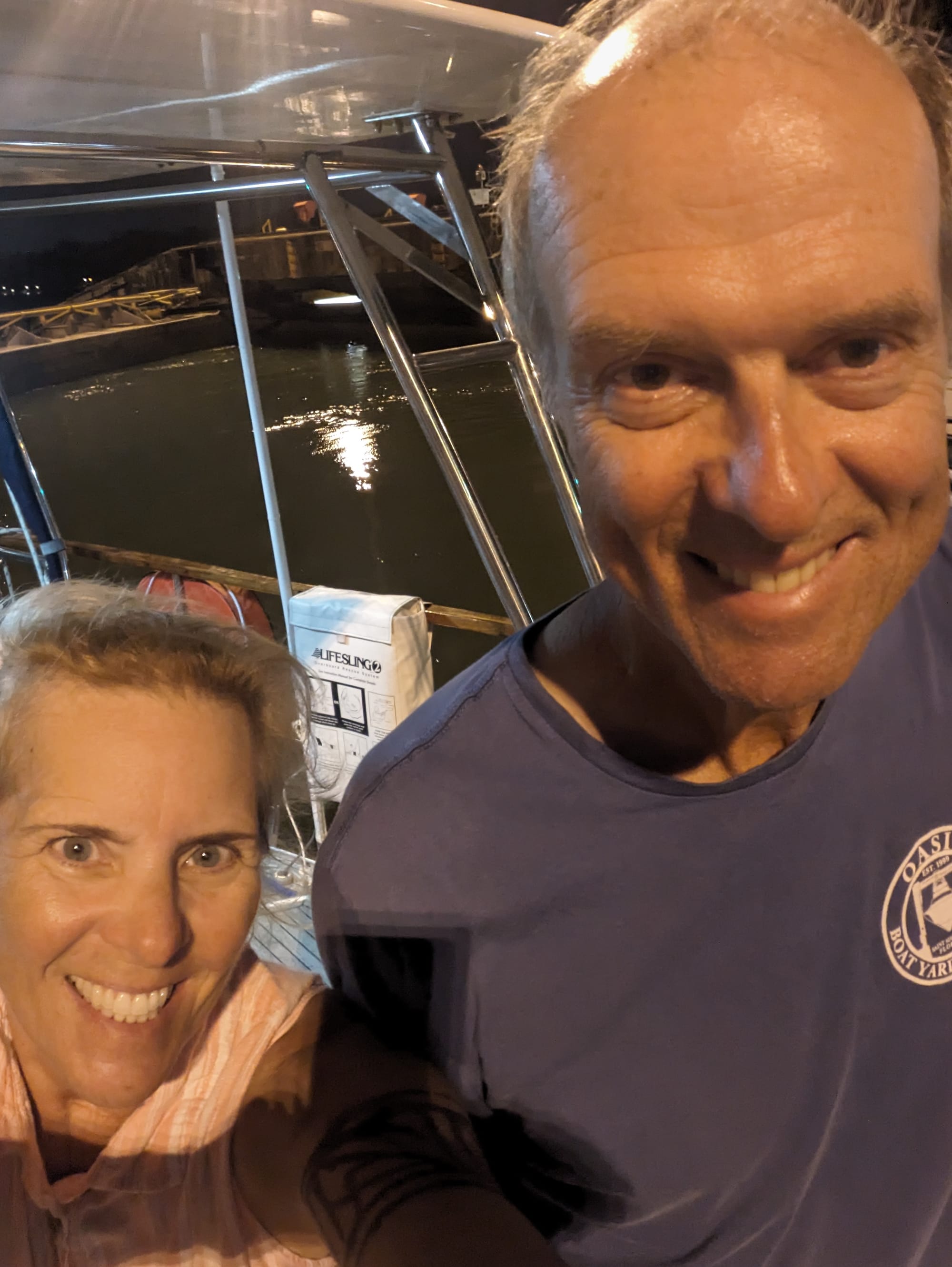
Our advisor was named Ricardo, but preferred to be called Ricky (yes, Lucy, Ricky Ricardo 😊). A former tugboat captain, he was now an instructor for Canal advisors and pilots. He and the young line-handlers do transits as moonlighting opportunities on their days off from work and school.
The Panama Canal is two distinct canals. The older one, which we went through, was completed in 1914. It is much narrower and cannot accommodate today’s immense supertankers. These boats use the new Canal, which was completed in 2016.
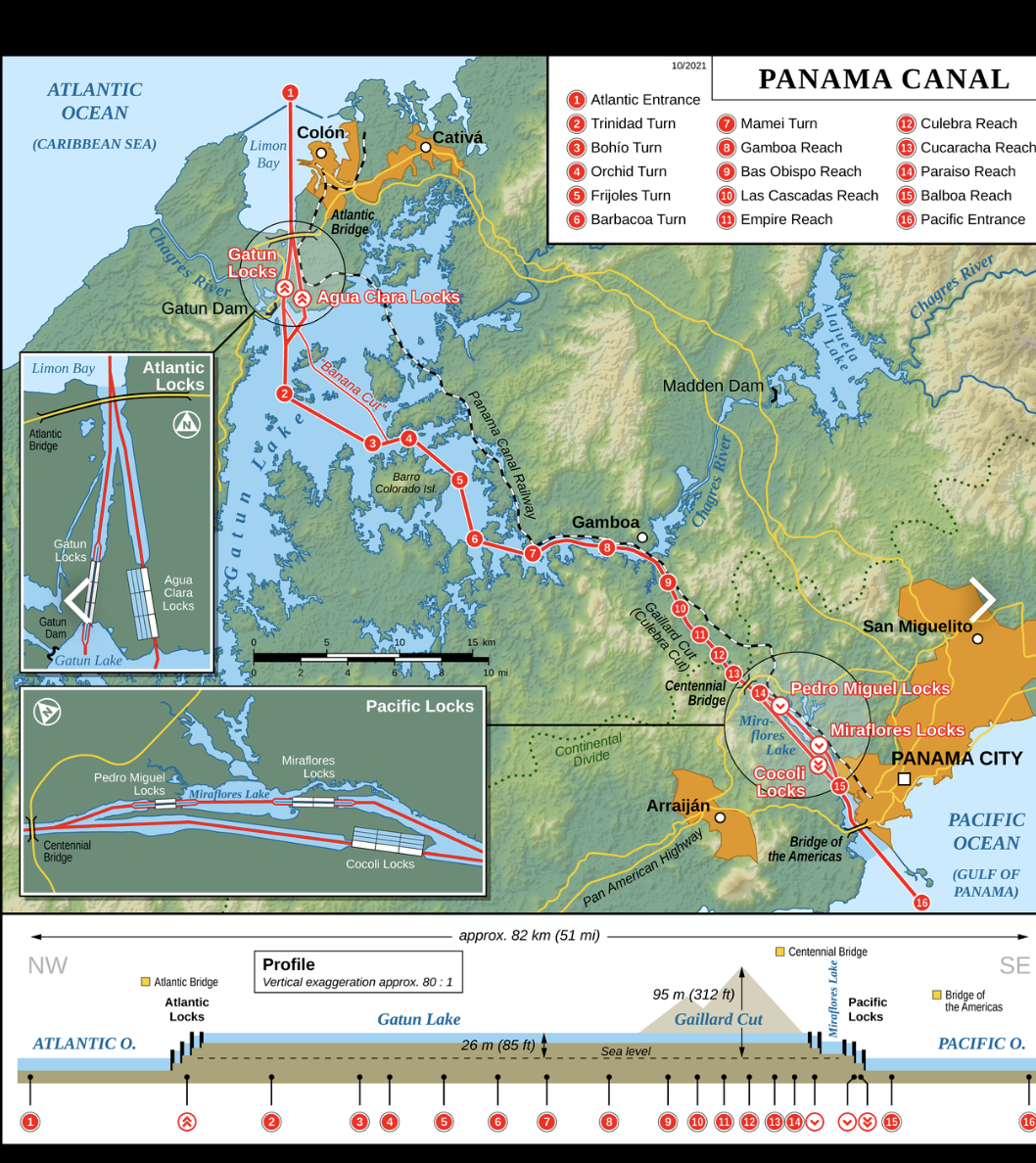
Our Canal transit was from the north to the south. Our journey would take us through the Gatun Locks (which has 3 chambers), then the Pedro Miguel Locks (which has 1 chamber), and finally the Miraflores Locks (which has 2 chambers). When we entered the first chamber, it was before sunrise and very dark outside with no moon. But we could clearly see the tall rough rock walls on either side and were thankful that we would not have to tie up next to that! Instead, we rafted to a catamaran which had opted to go next to the wall (that captain almost instantly regretted that decision since it required his constant attention to keep his boat from getting damaged).
Ahead of us was an enormous "ro-ro" (a car carrier) Apollon Leader. She had about 3 feet of clearance to either side and was held in that spot by cables attached to special trains whose tracks ran parallel to the canal.
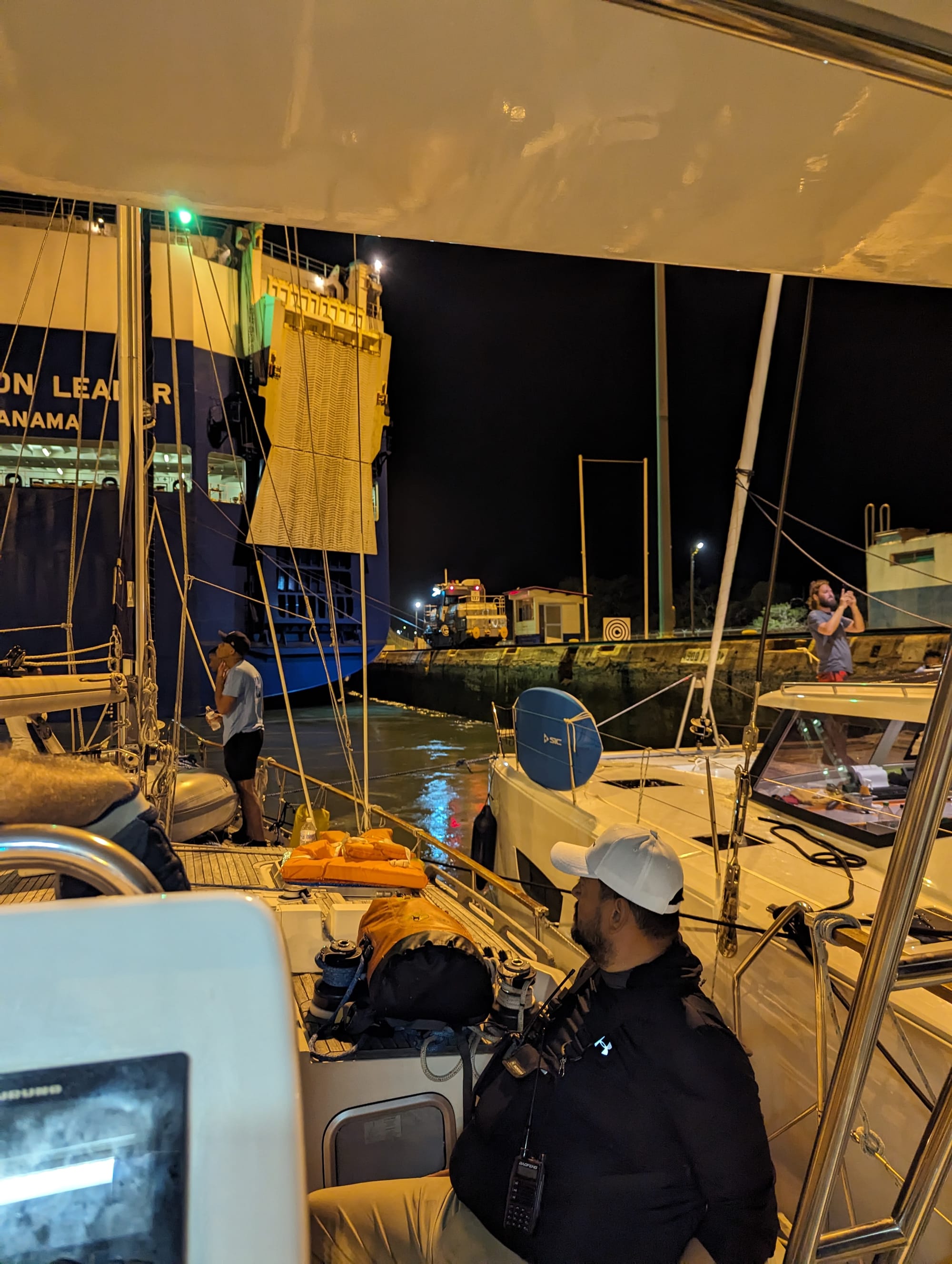
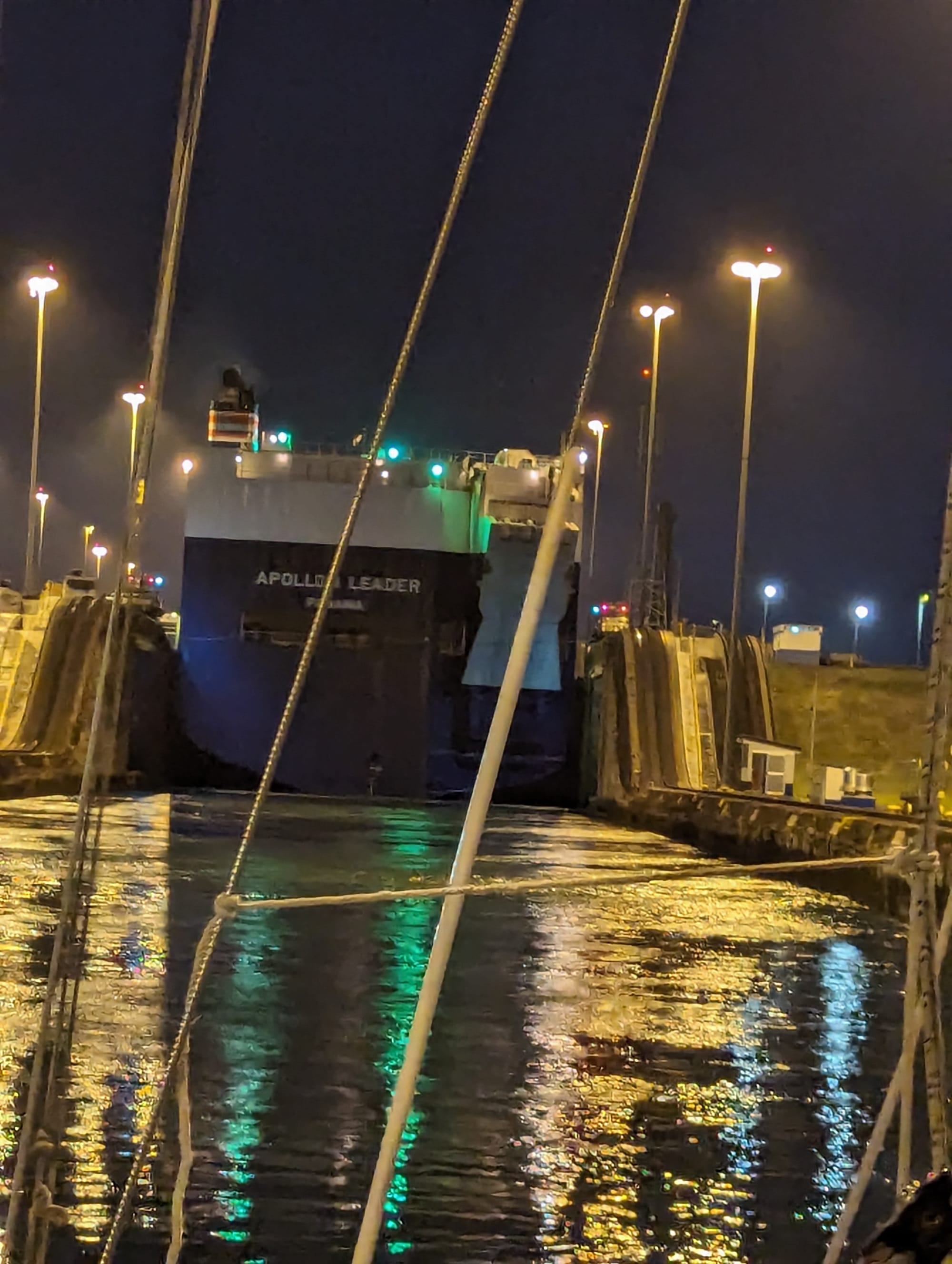
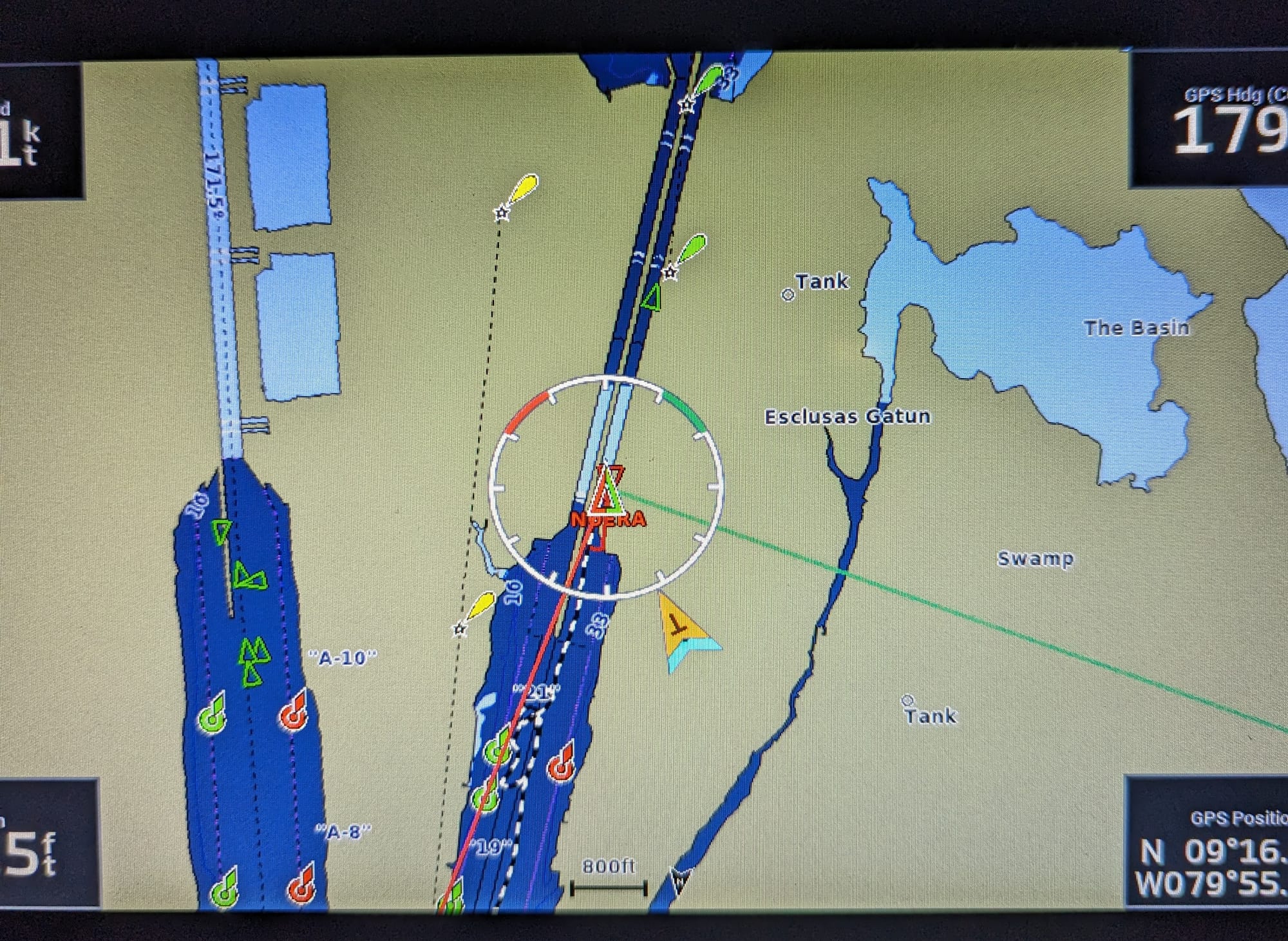

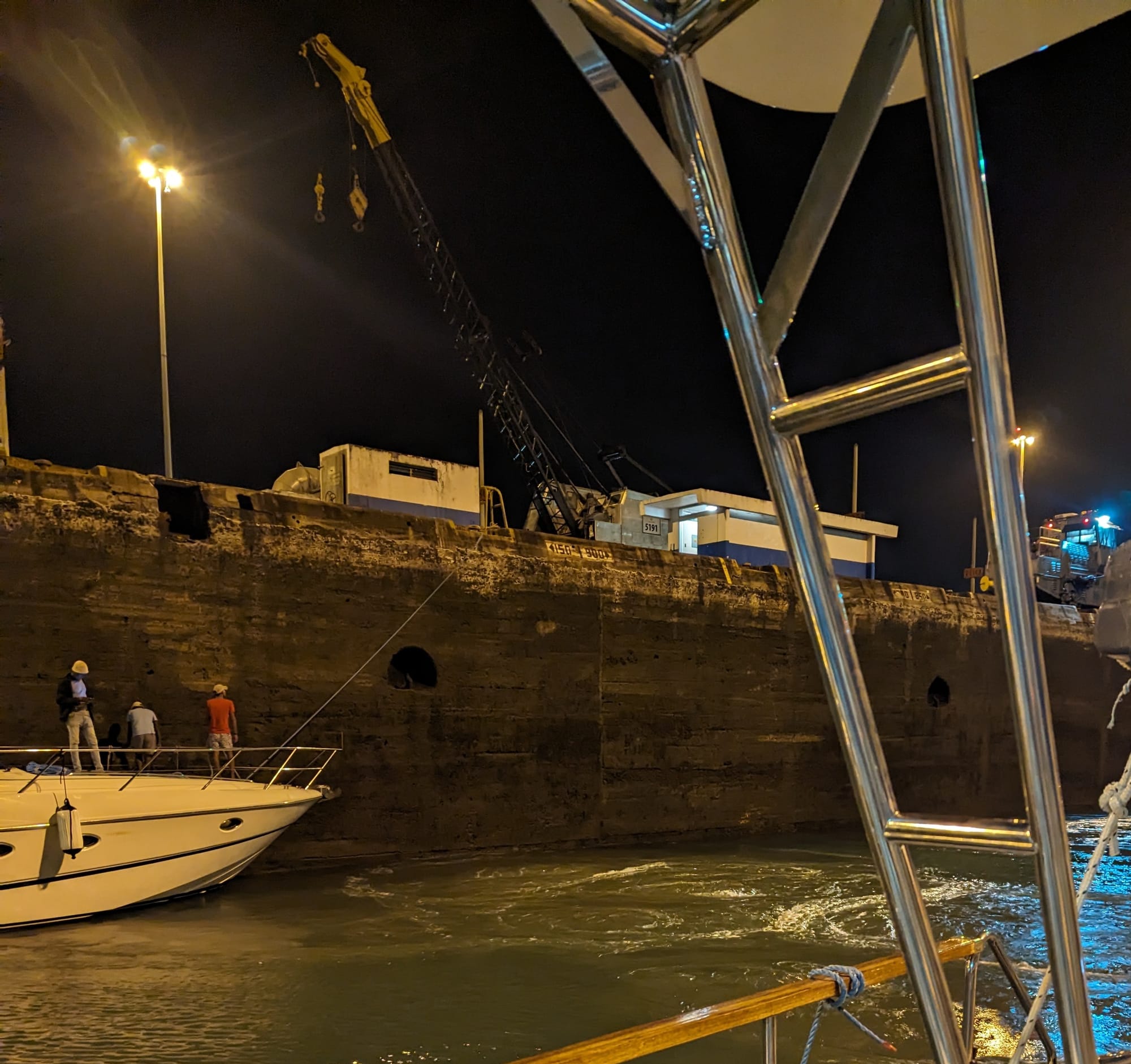
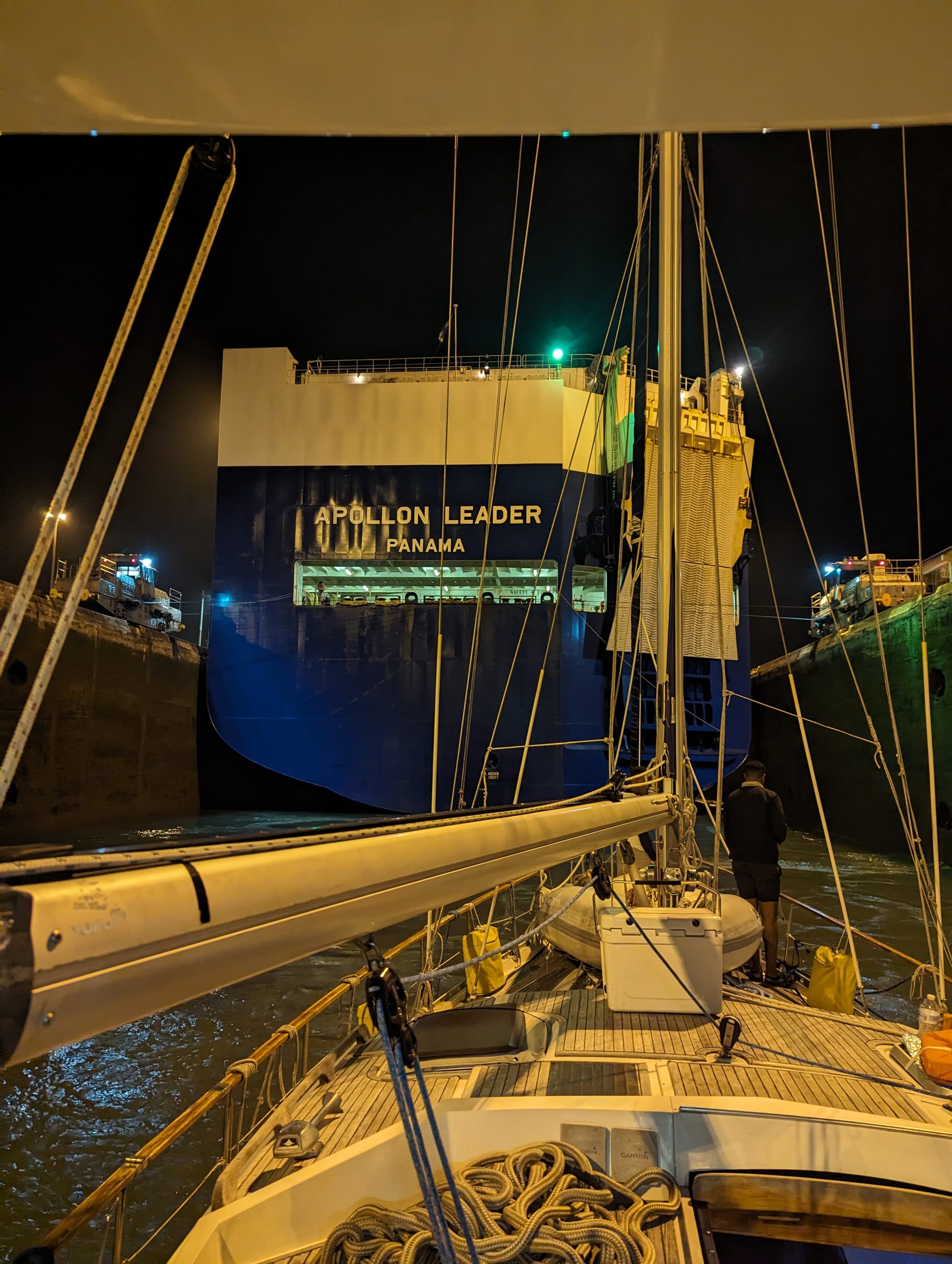
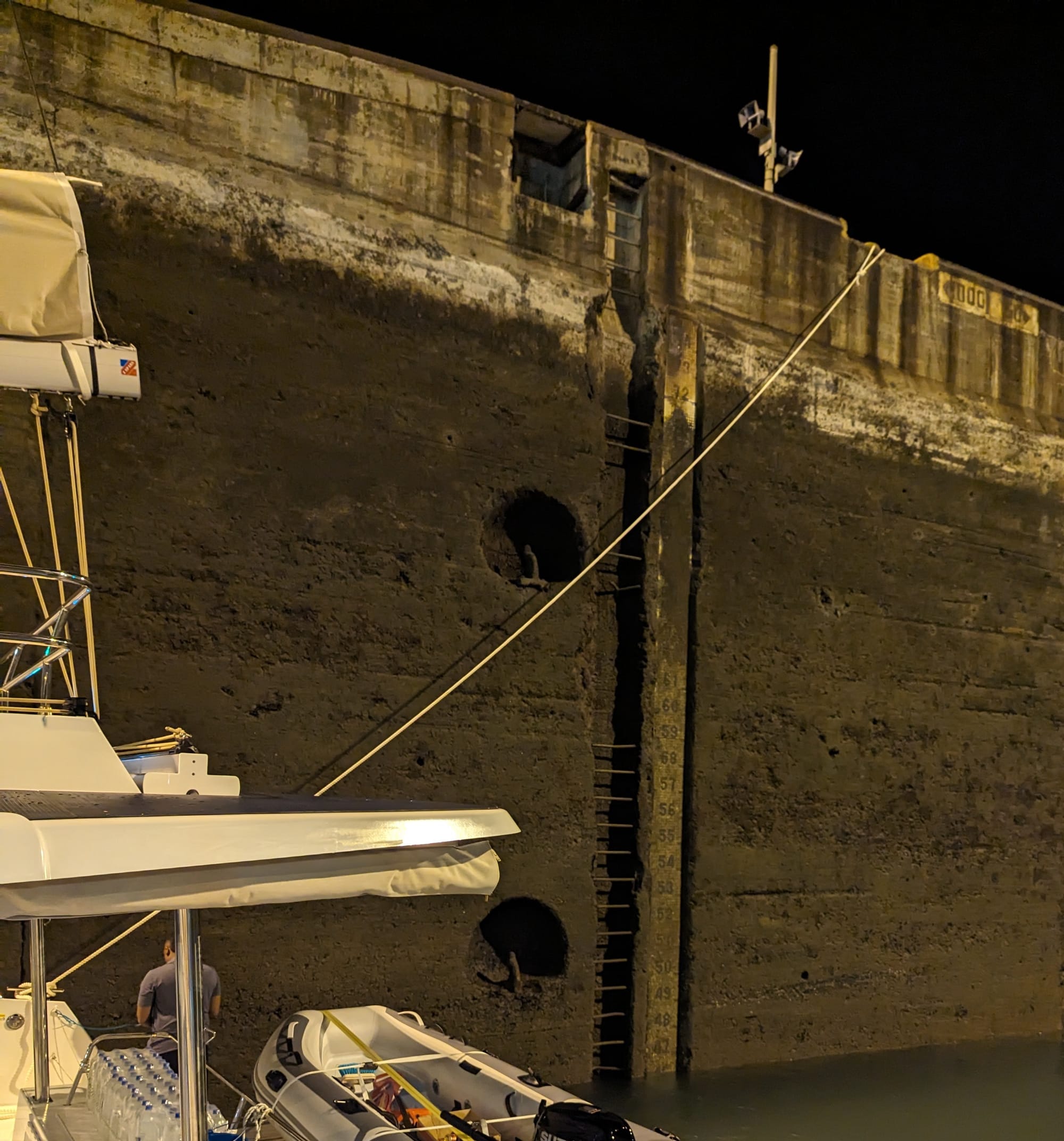
Initially the water level was low, and the walls were very high. But then the huge gates (the original huge gates!) closed slowly and silently behind us. With everyone’s engine running, we could not hear the influx of water coming into the lock, but the very strong eddies swirling around us were easy to spot. Up, up, up we went until we were even with the top of the wall!

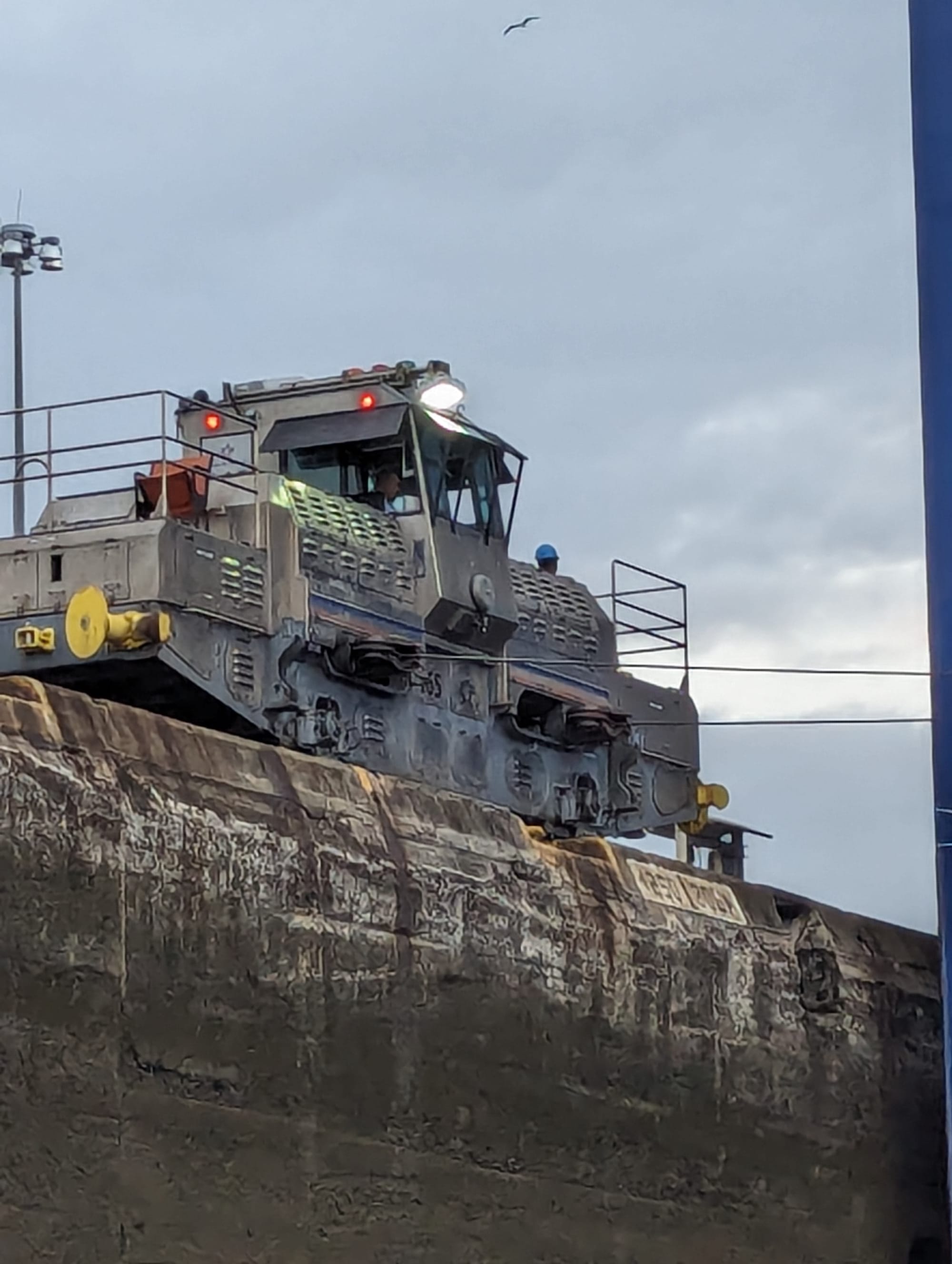
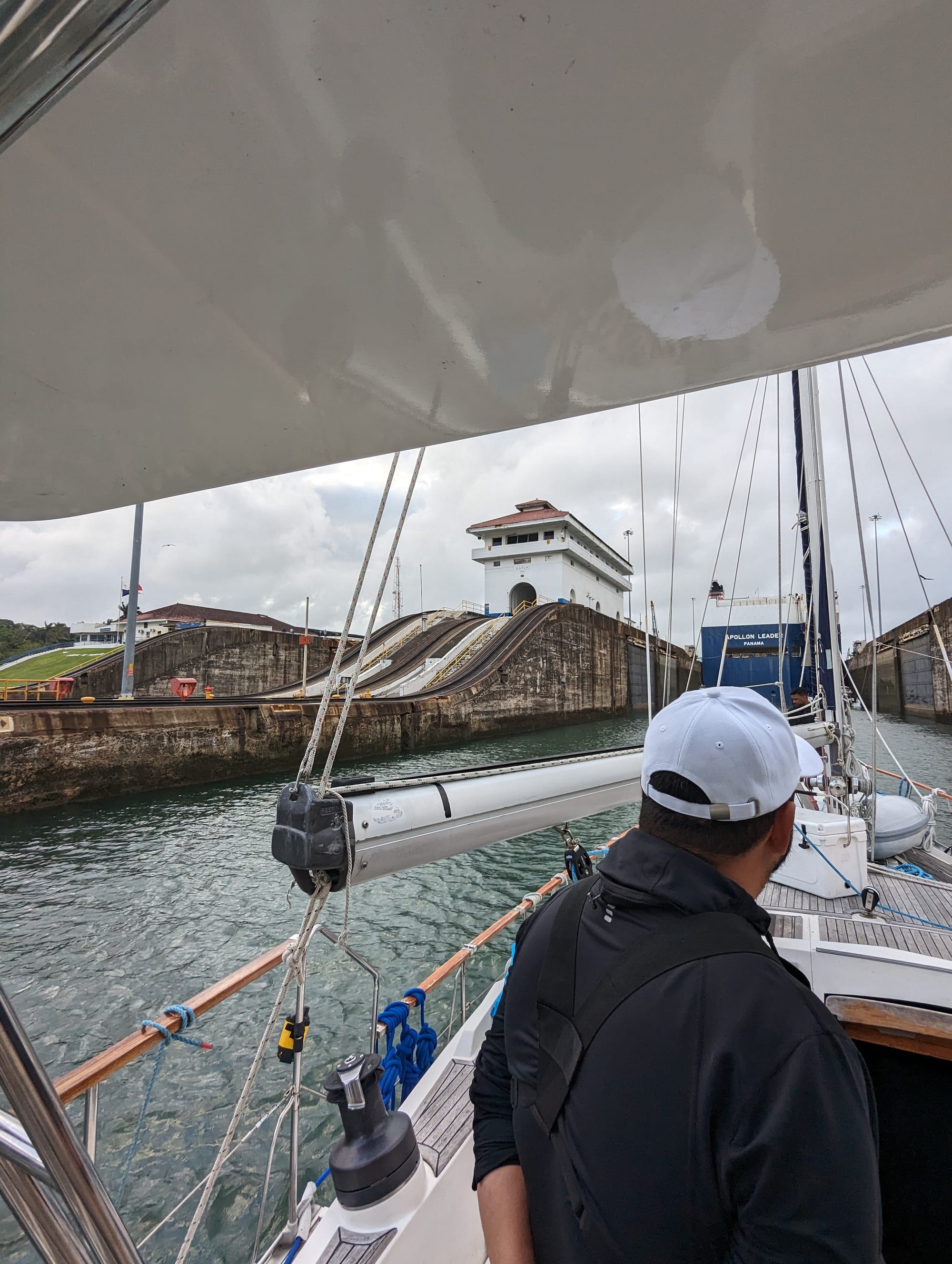
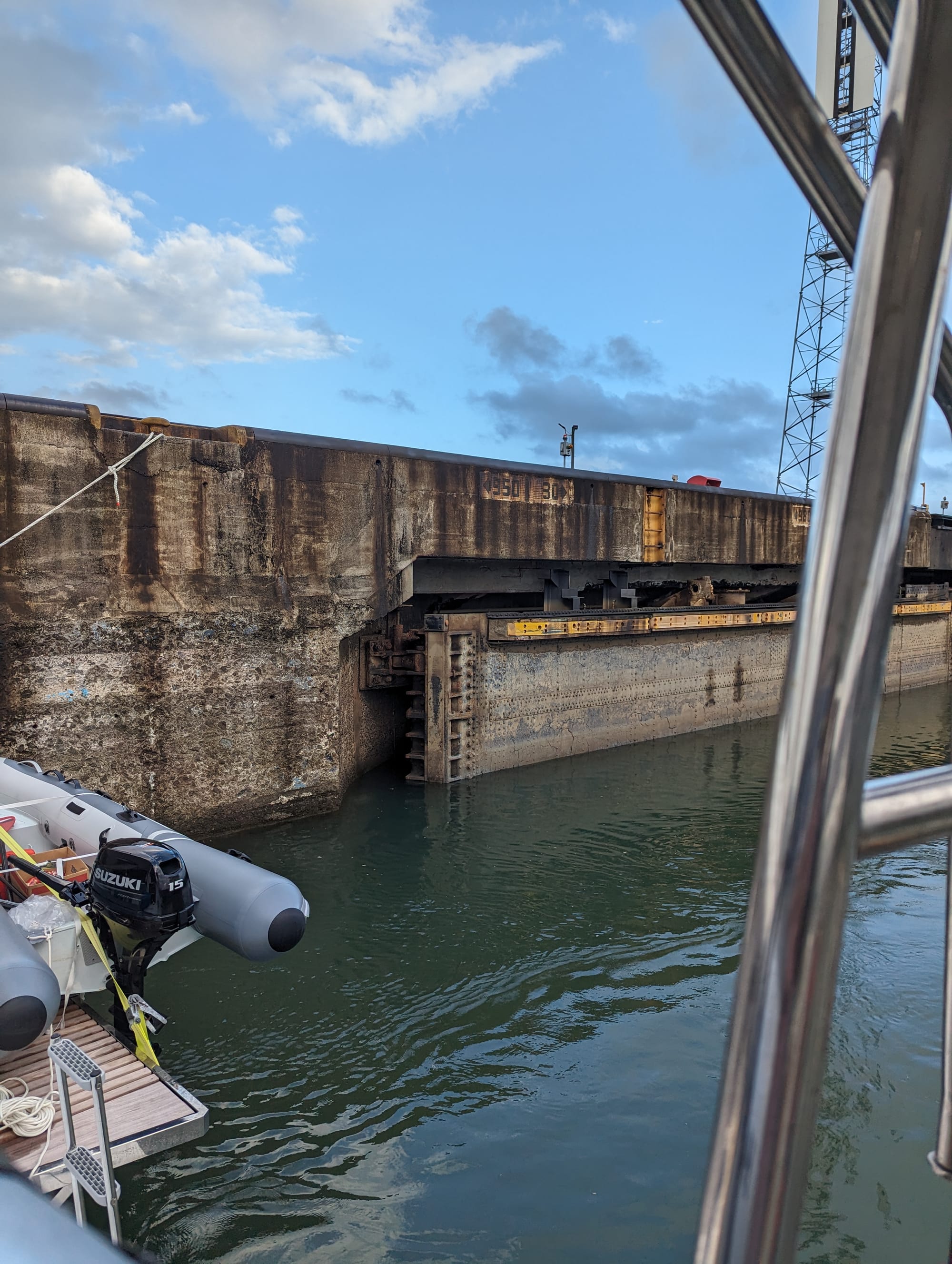
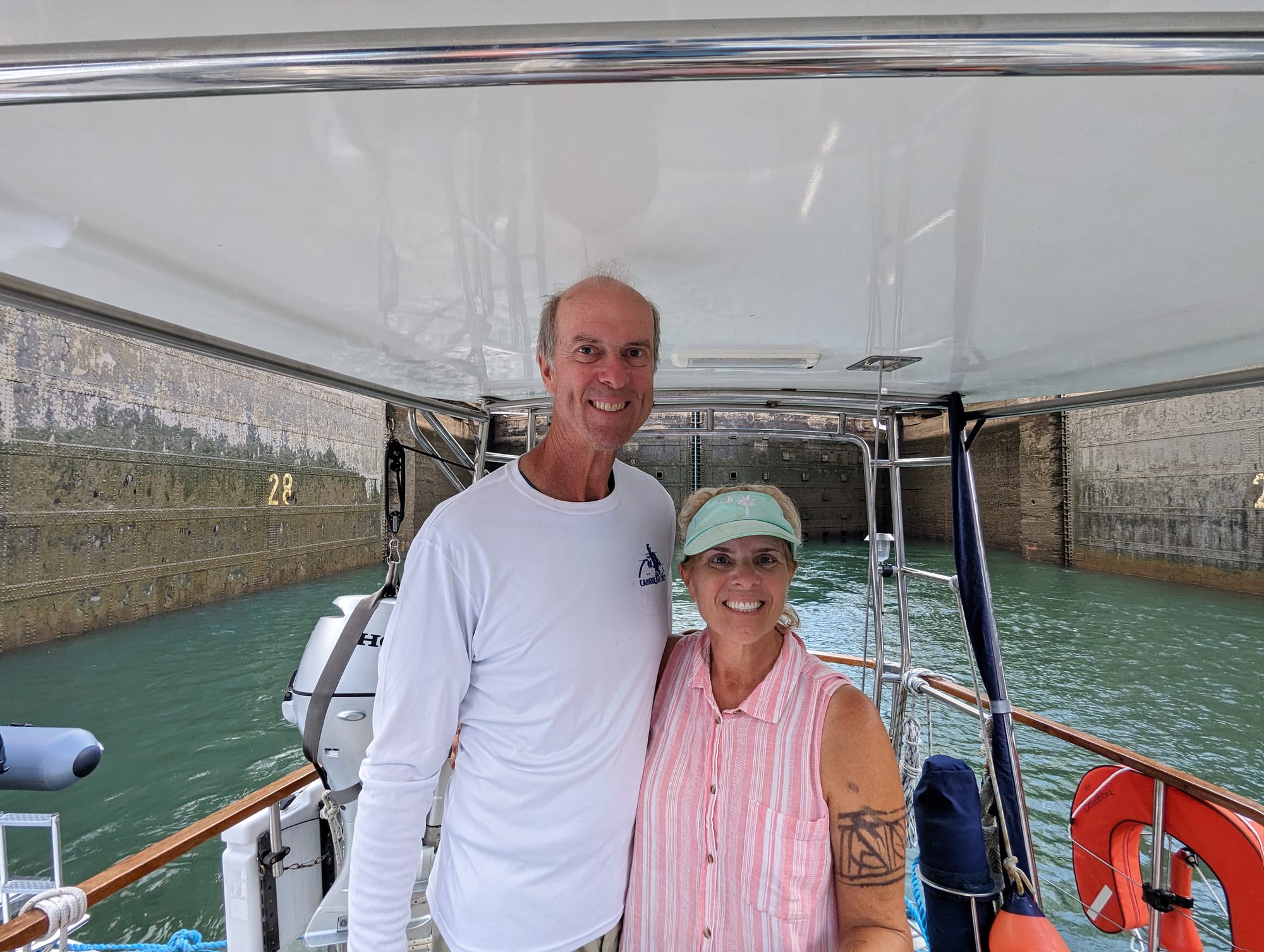
We couldn’t see when the other doors opened, but simply followed Apollon Leader to the next lock. There we repeated the process of rafting to the catamaran, and watched in amazement how easily all the boats were lifted. The process was repeated for the third lock, and then we were in Gatun Lake, 85 feet higher than from where we started! The whole event took about an hour and 15 minutes.
Gatun Lake is quite beautiful as it is located in the middle of a national park. Trees lined the banks, and it had a wild look to it. We were required to stay in the 50-ft channel that was well-marked for all the ship traffic passing through. At one point we were motoring alongside a big cargo ship whose propeller kept pulling our stern toward it. You really had to pay attention to avoid getting too close to the ship and too close to the shore because it becomes very shallow very quickly.
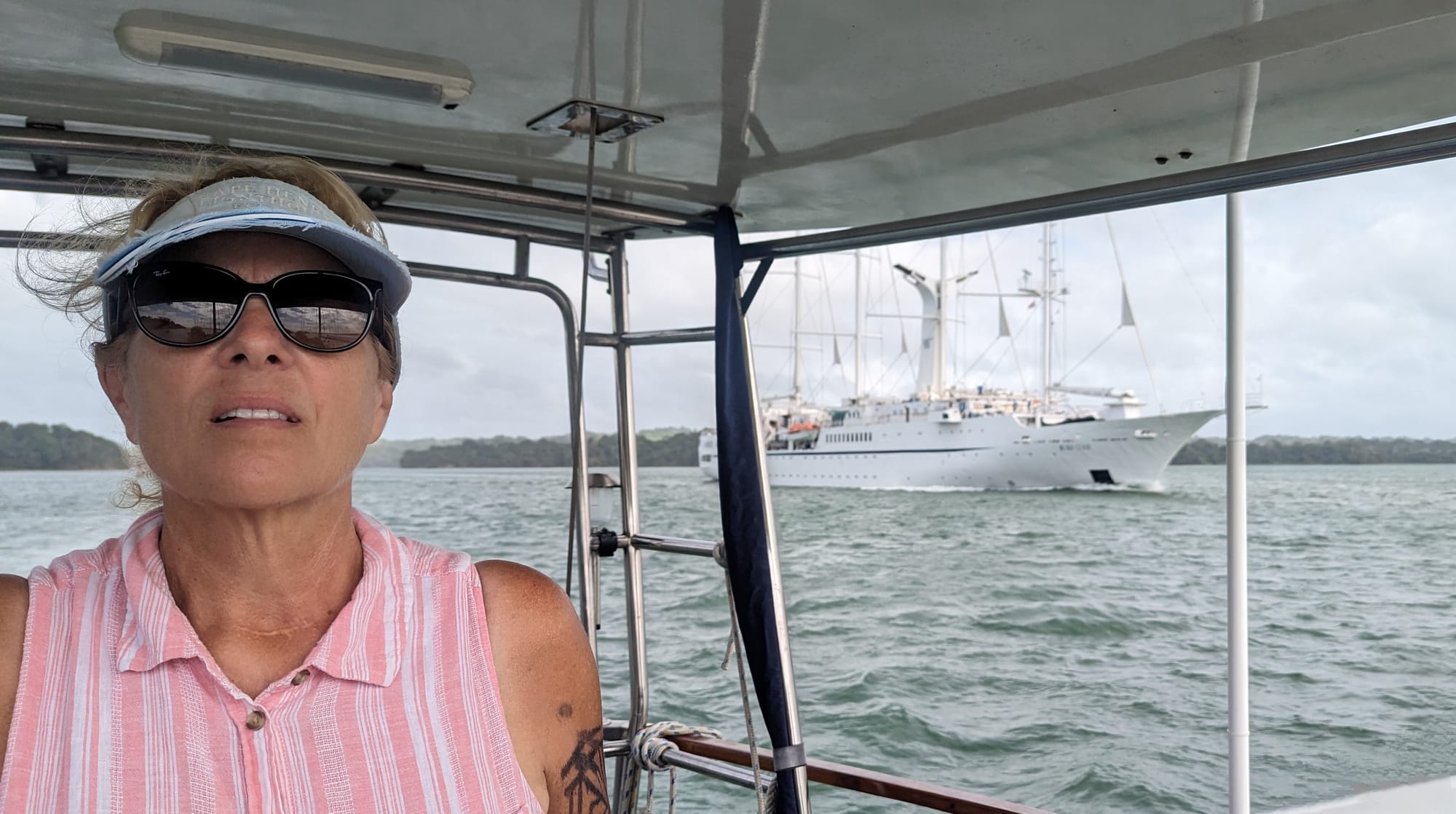
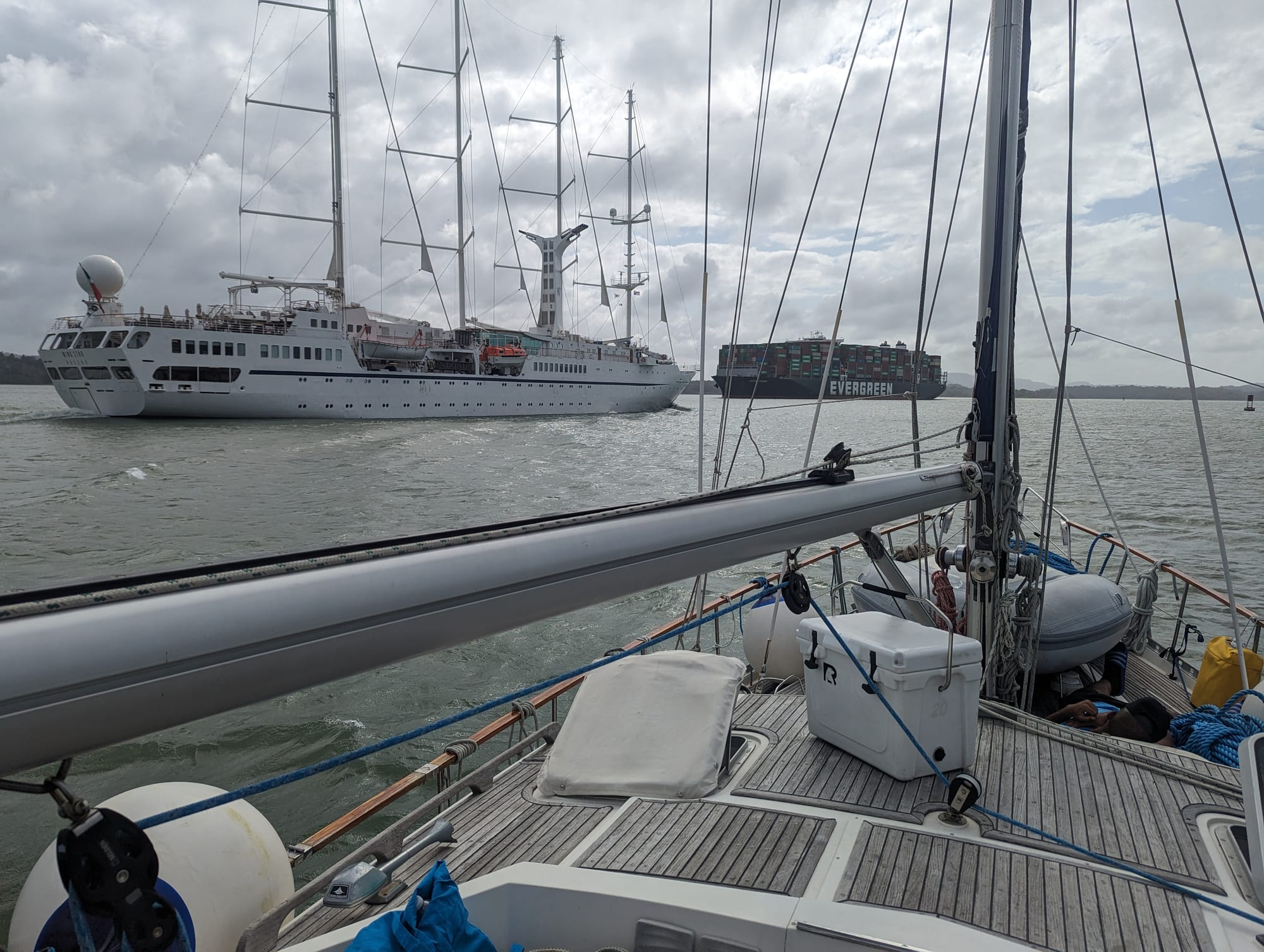
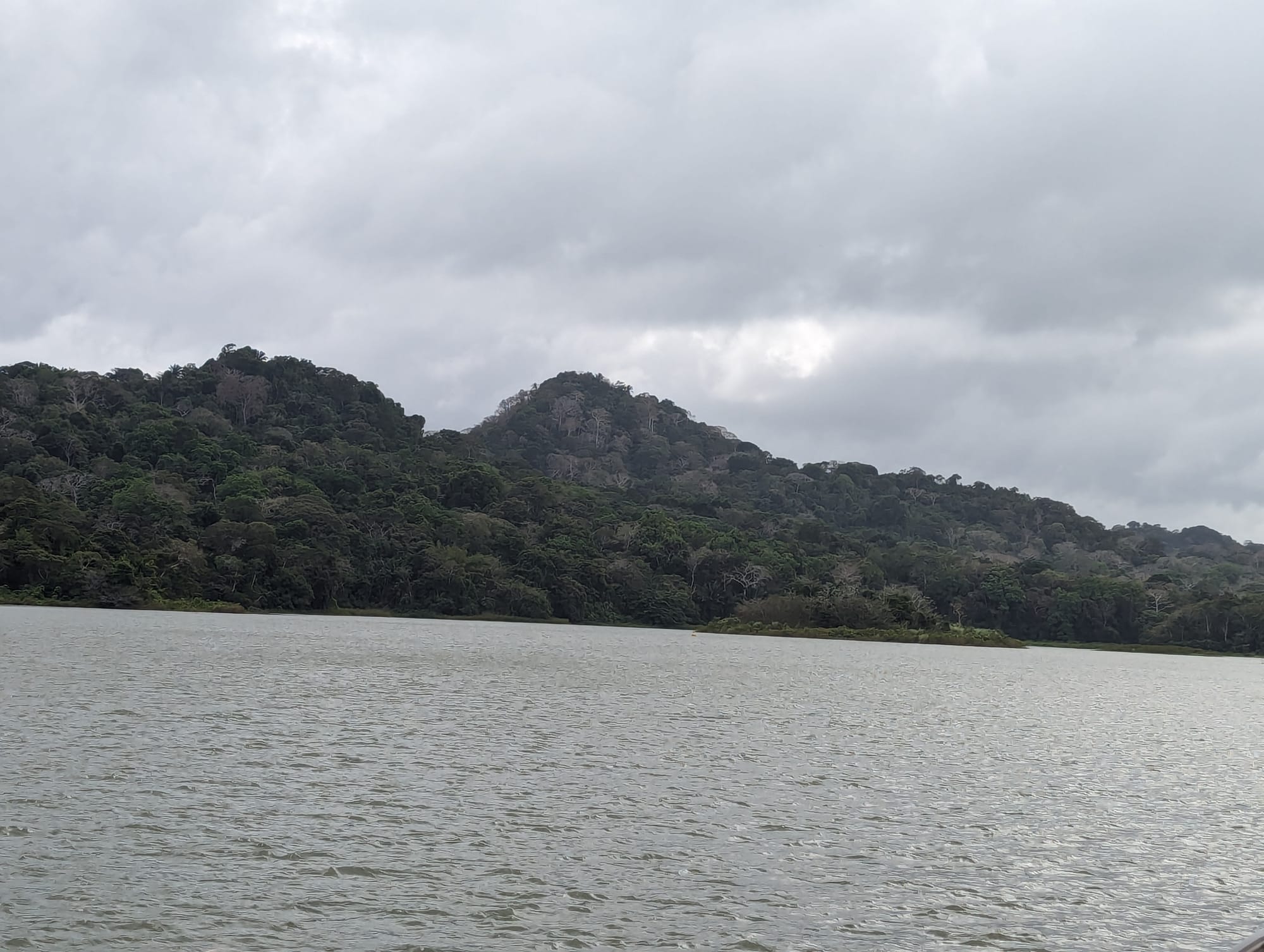
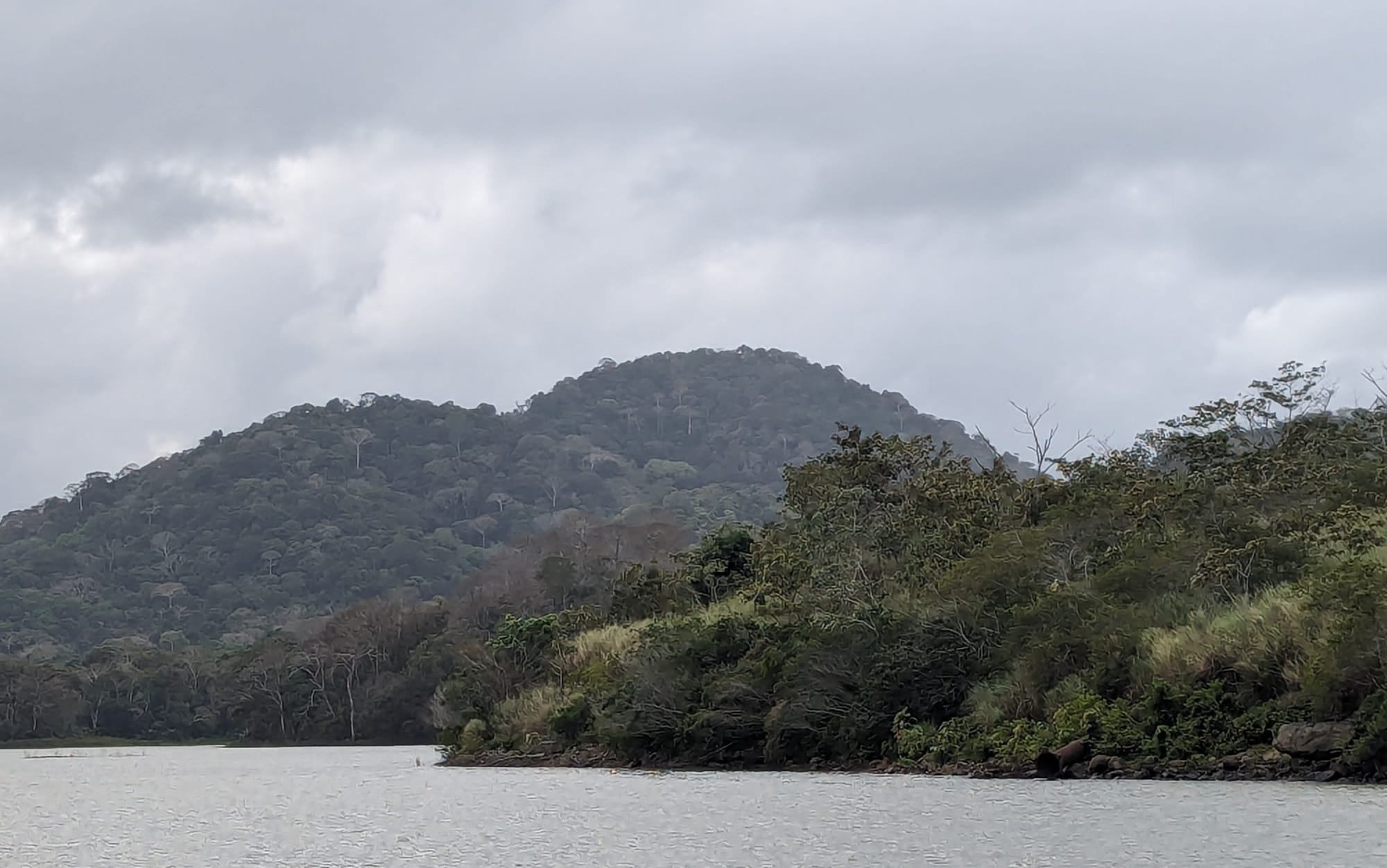
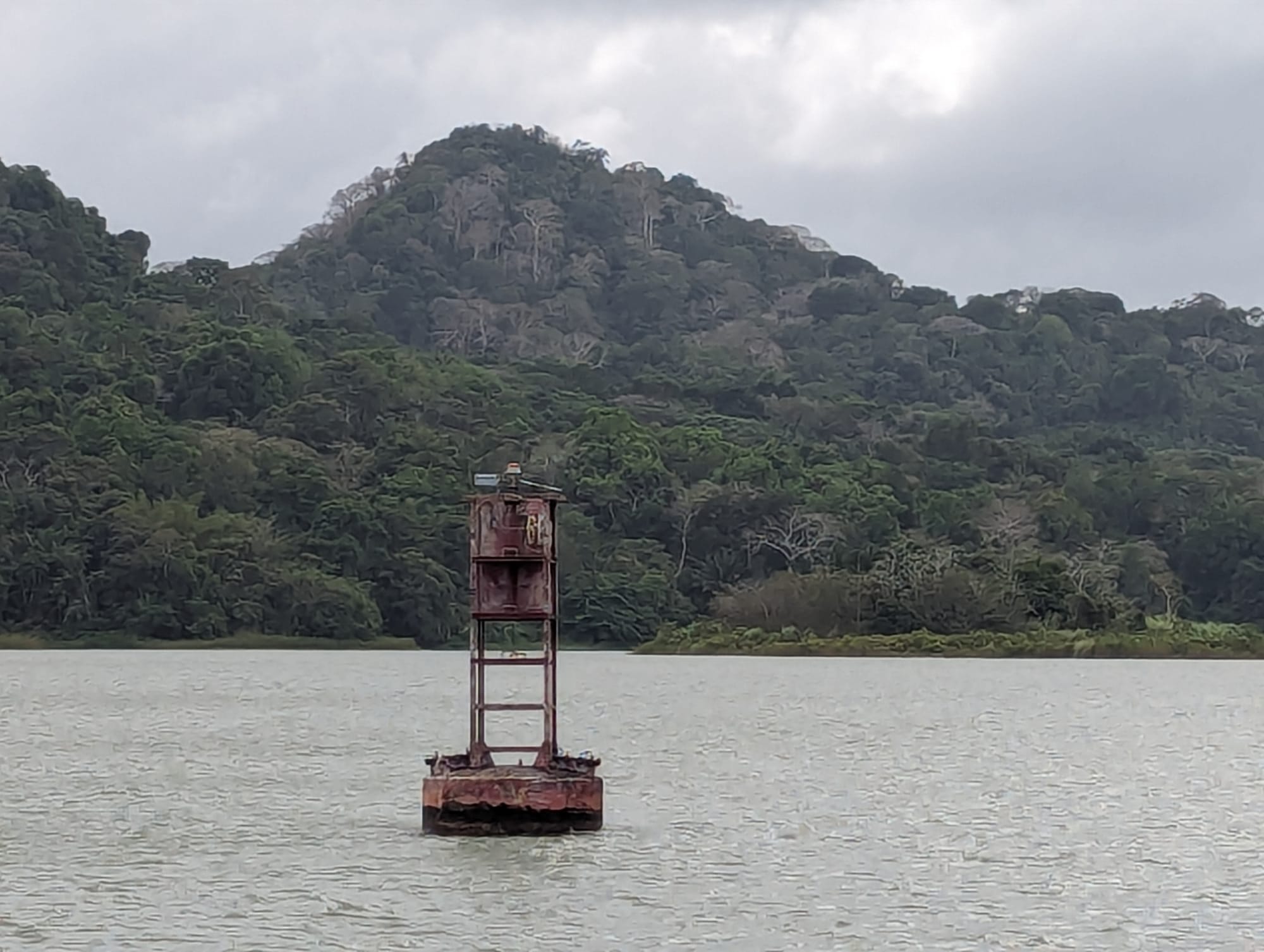
Our next stop was the Pedro Miguel Locks. This time we were rafted to a ferry full of very inquisitive passengers. We were quite the celebrities, and I wished that I had dressed better for the occasion! 😊
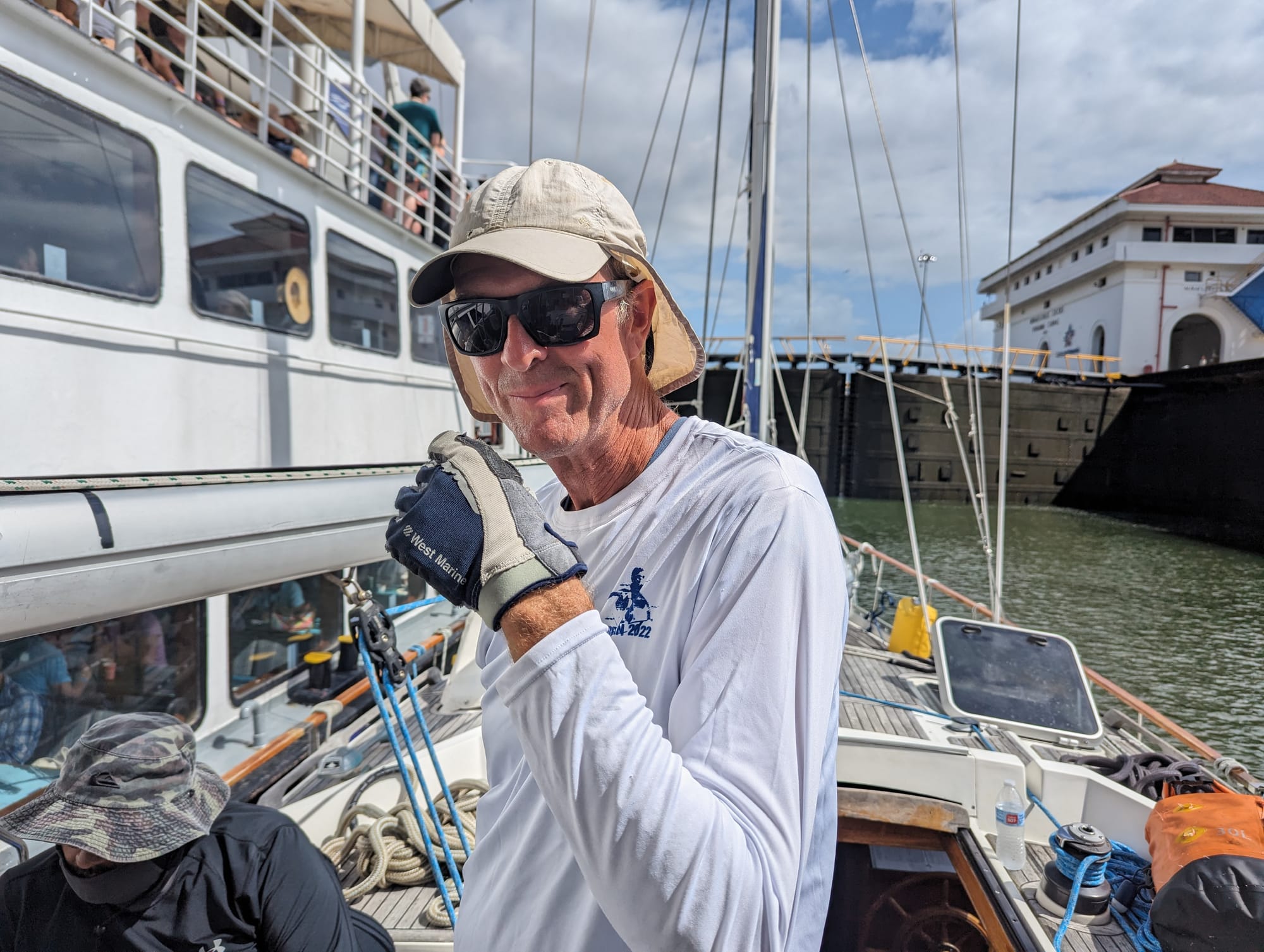
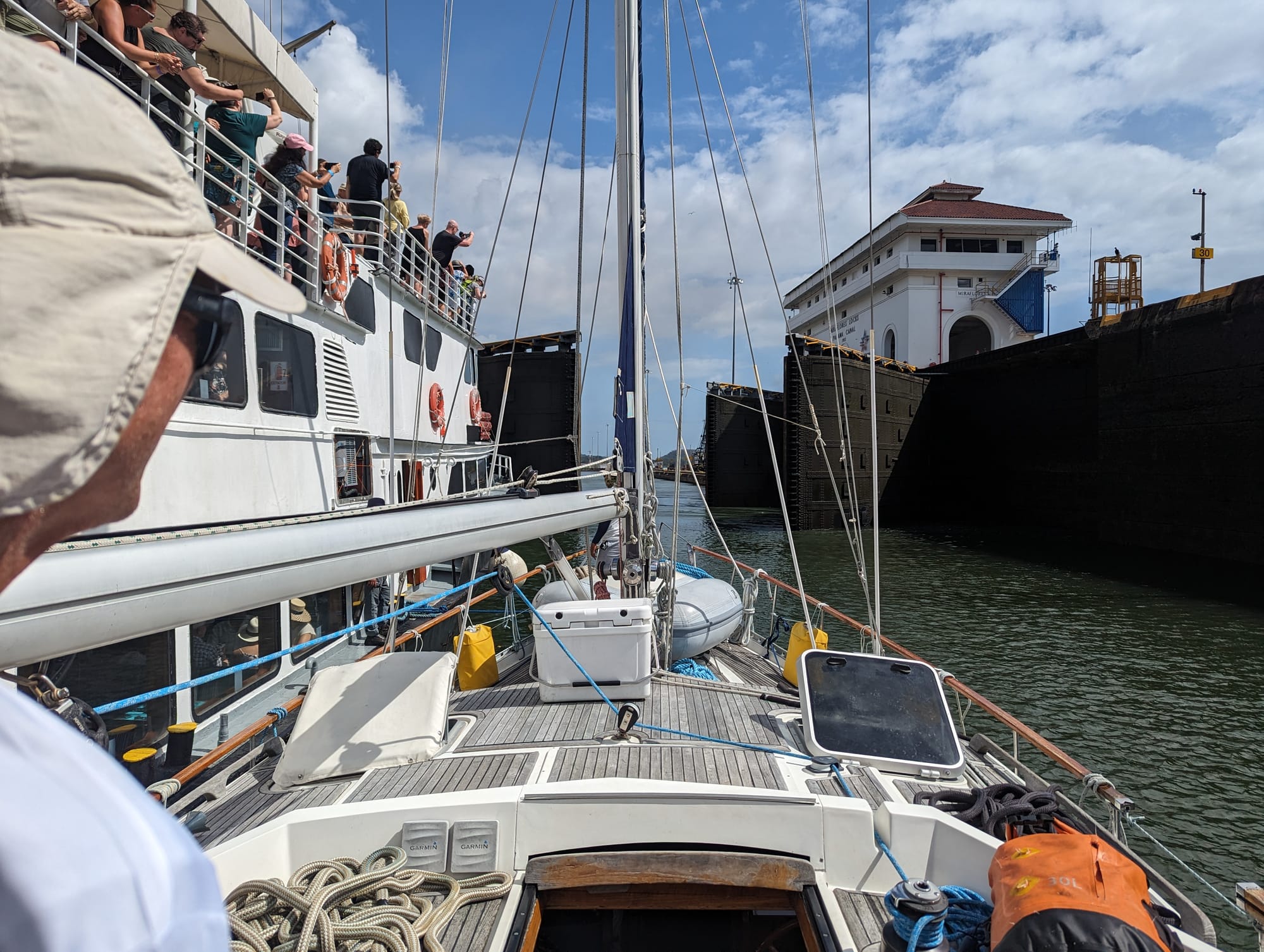
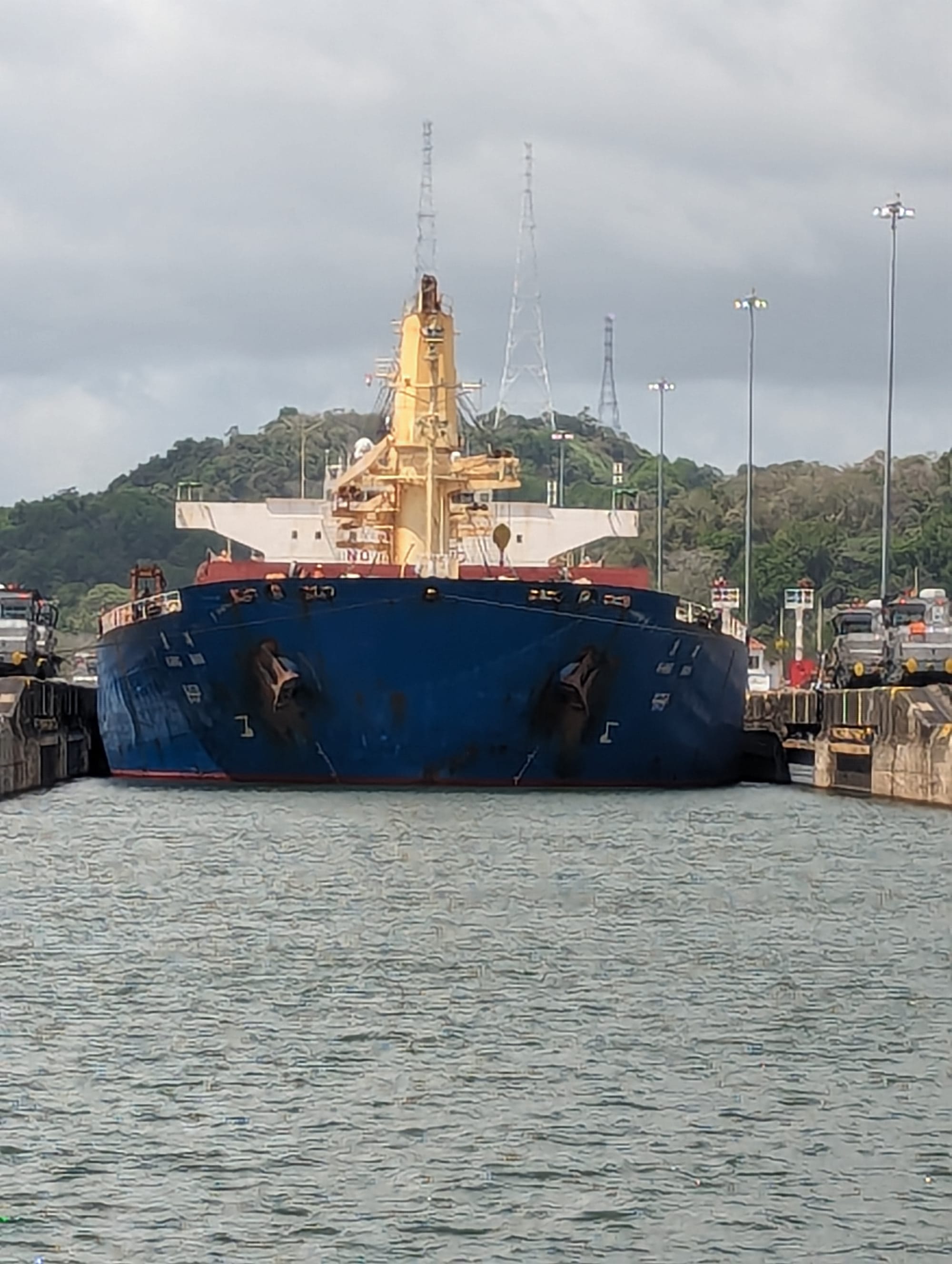
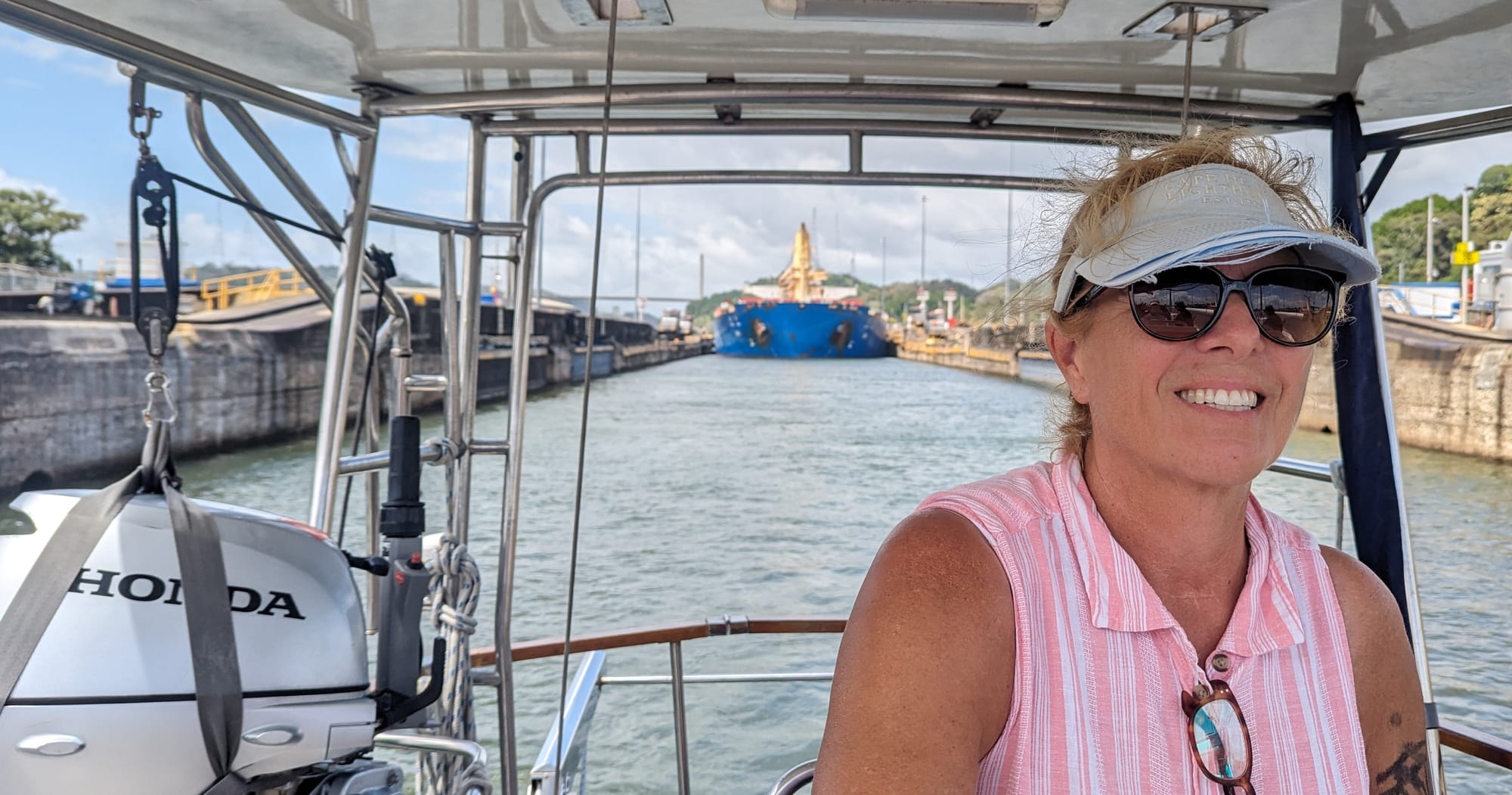
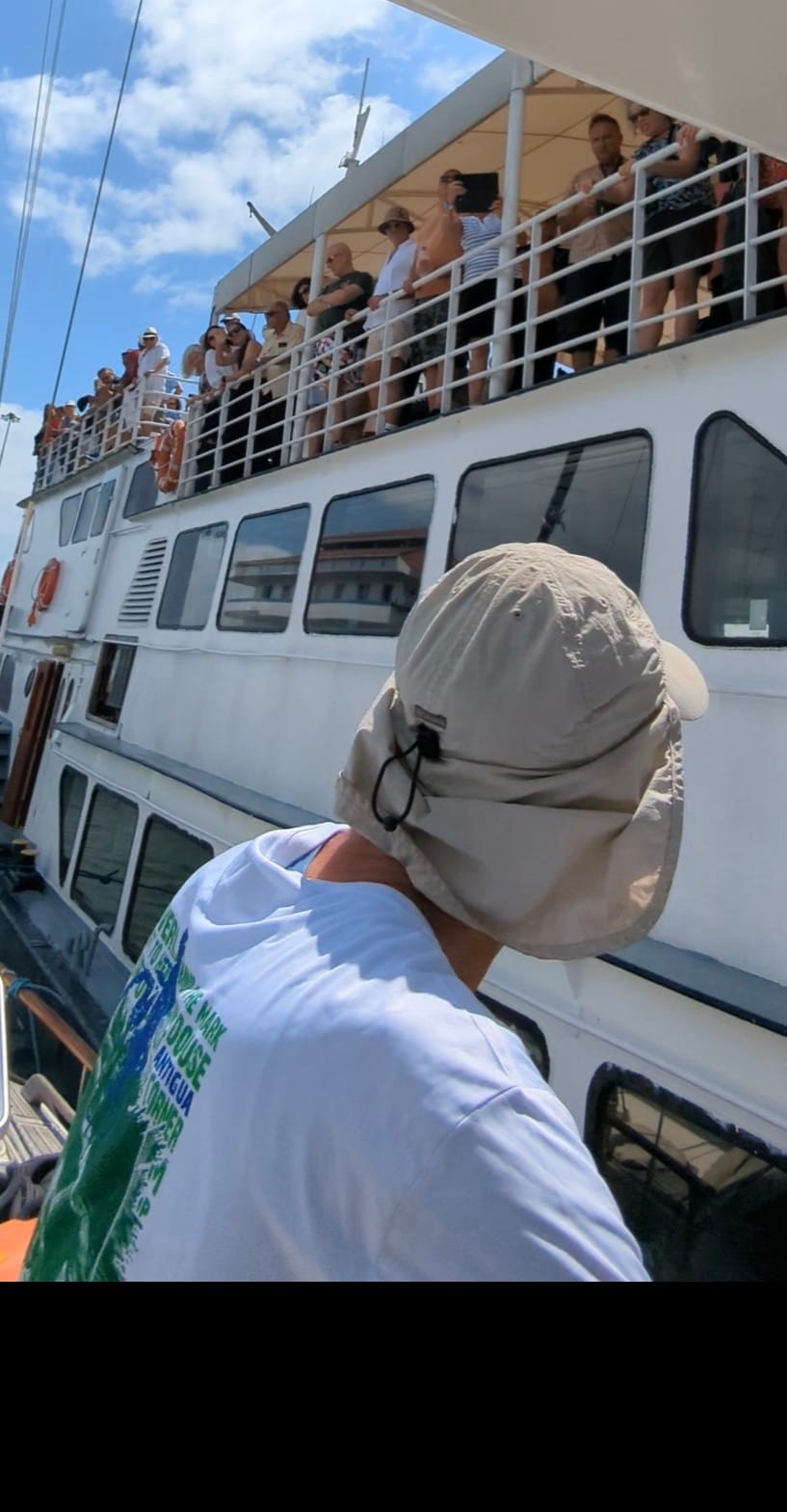
For this lock we entered before a big tanker did. It was a bit of a nail-biting experience wondering if it could stop before crashing into us, but there was never a problem even as it came within 150 feet of our stern.
So, this lock was going to take us down closer to the level of the Pacific Ocean. And we watched with fascination as the water dropped us 54 feet.
Not too far were the final Miraflores Locks, where once again we rafted with the ferry. We knew that Whitson was in the Viewing Building but could not see him as the ferry was blocking the view. So, Whit just waved at the building, hoping that he could see us!

These locks dropped us another 31 feet, and all of a sudden, we were through the Canal! Very soon we were passing under the Bridge of the Americas, and then “Hello, Pacific Ocean!” It was an event that I will remember for the rest of my life.
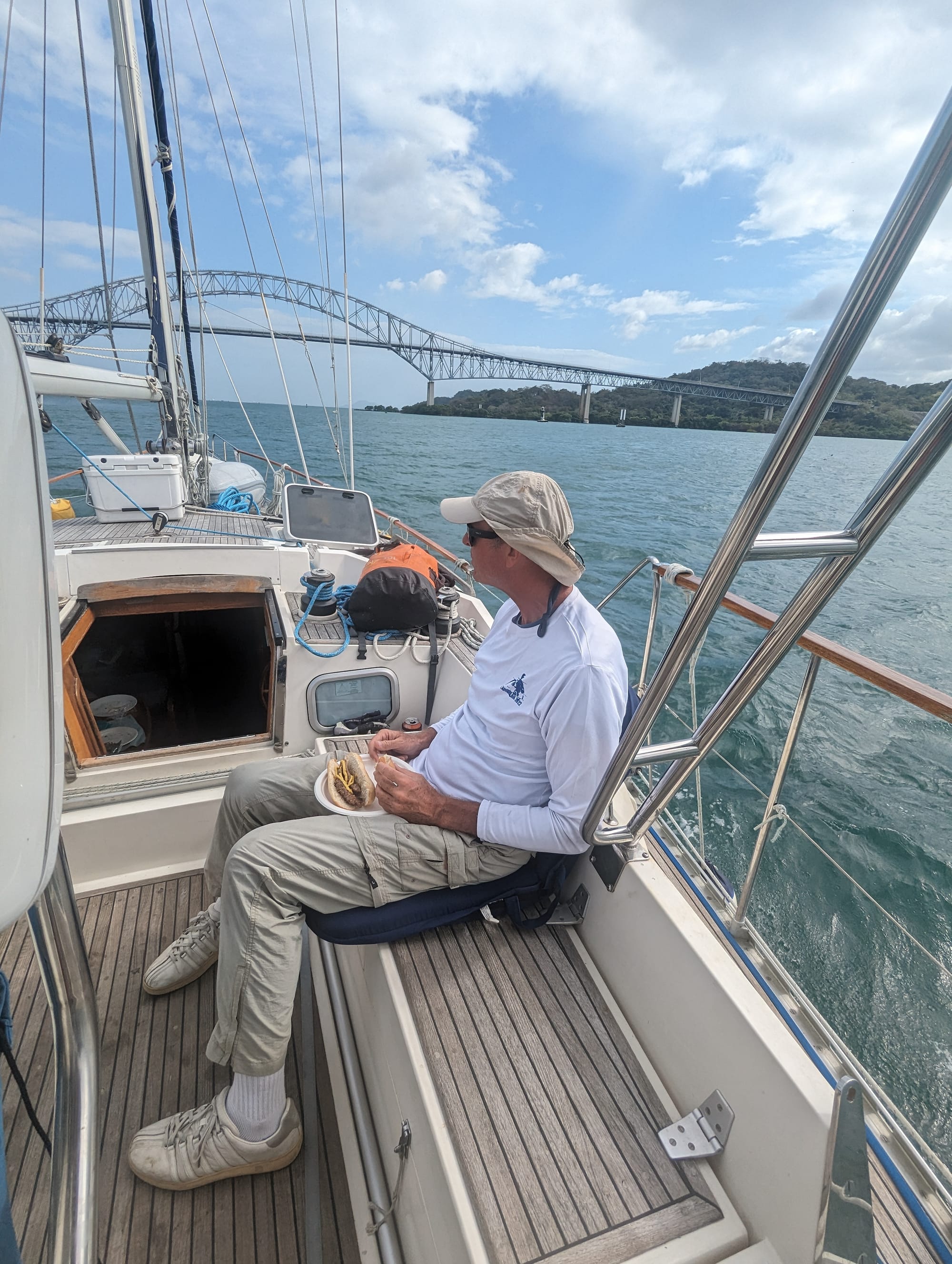
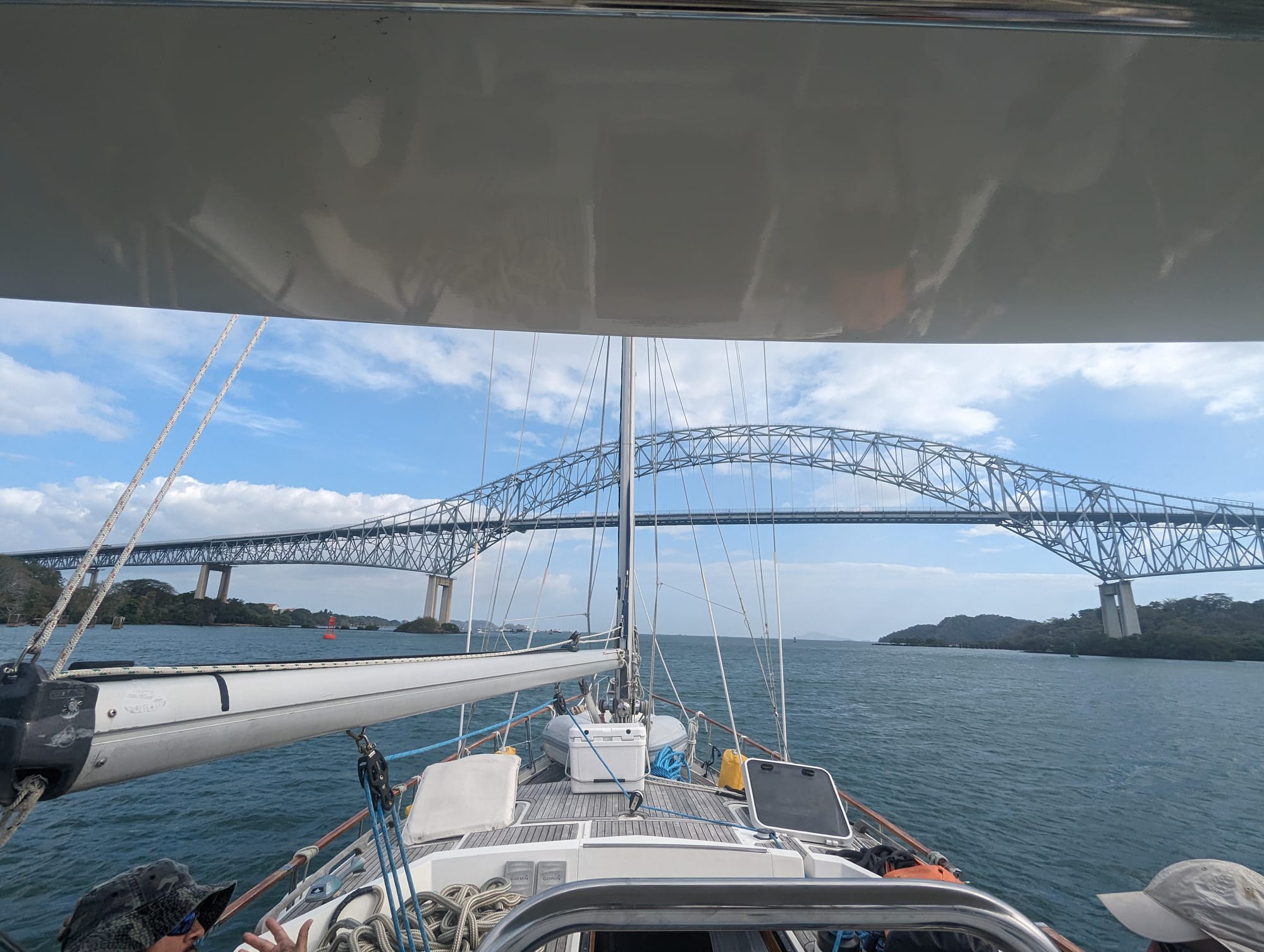
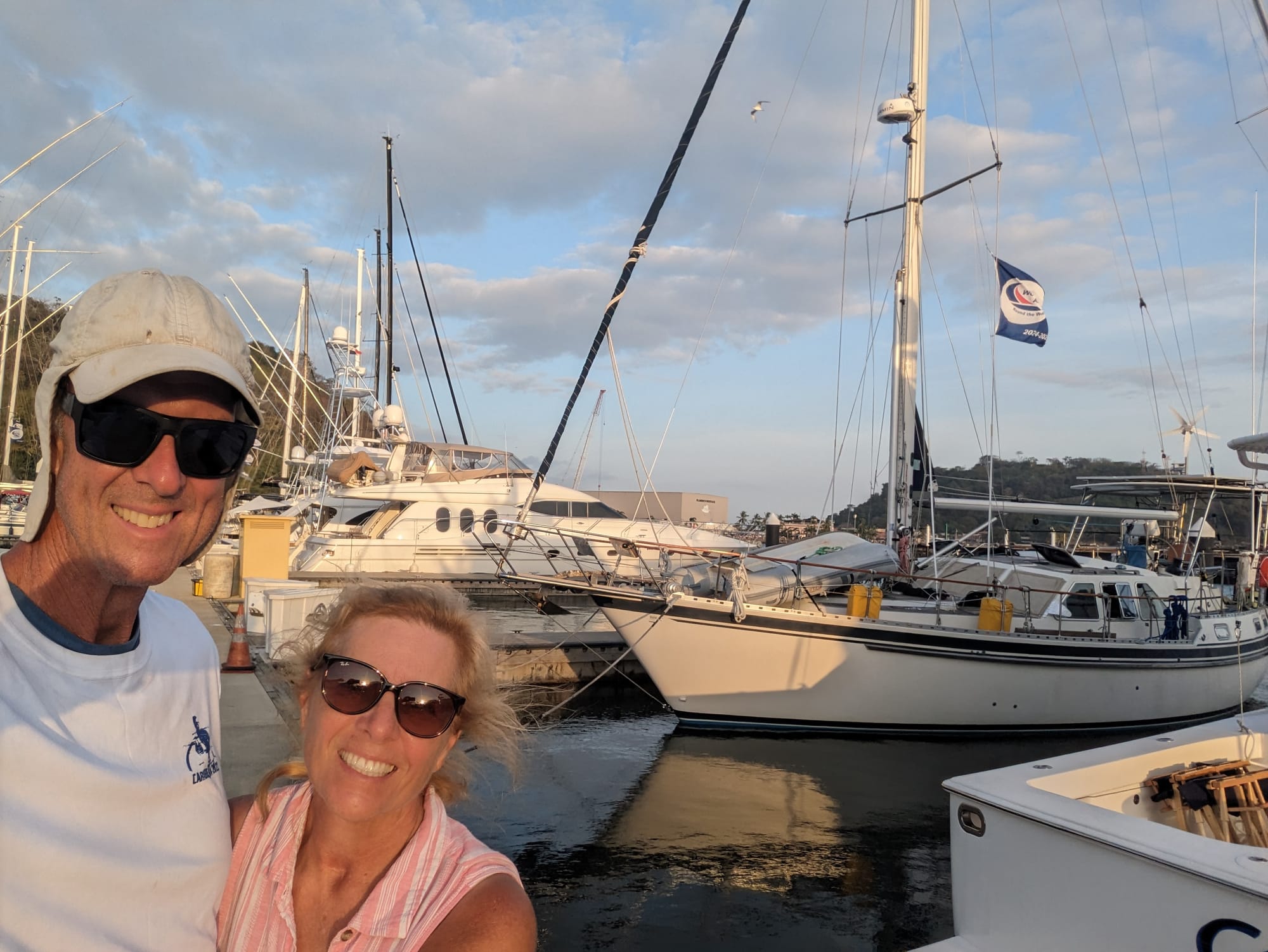
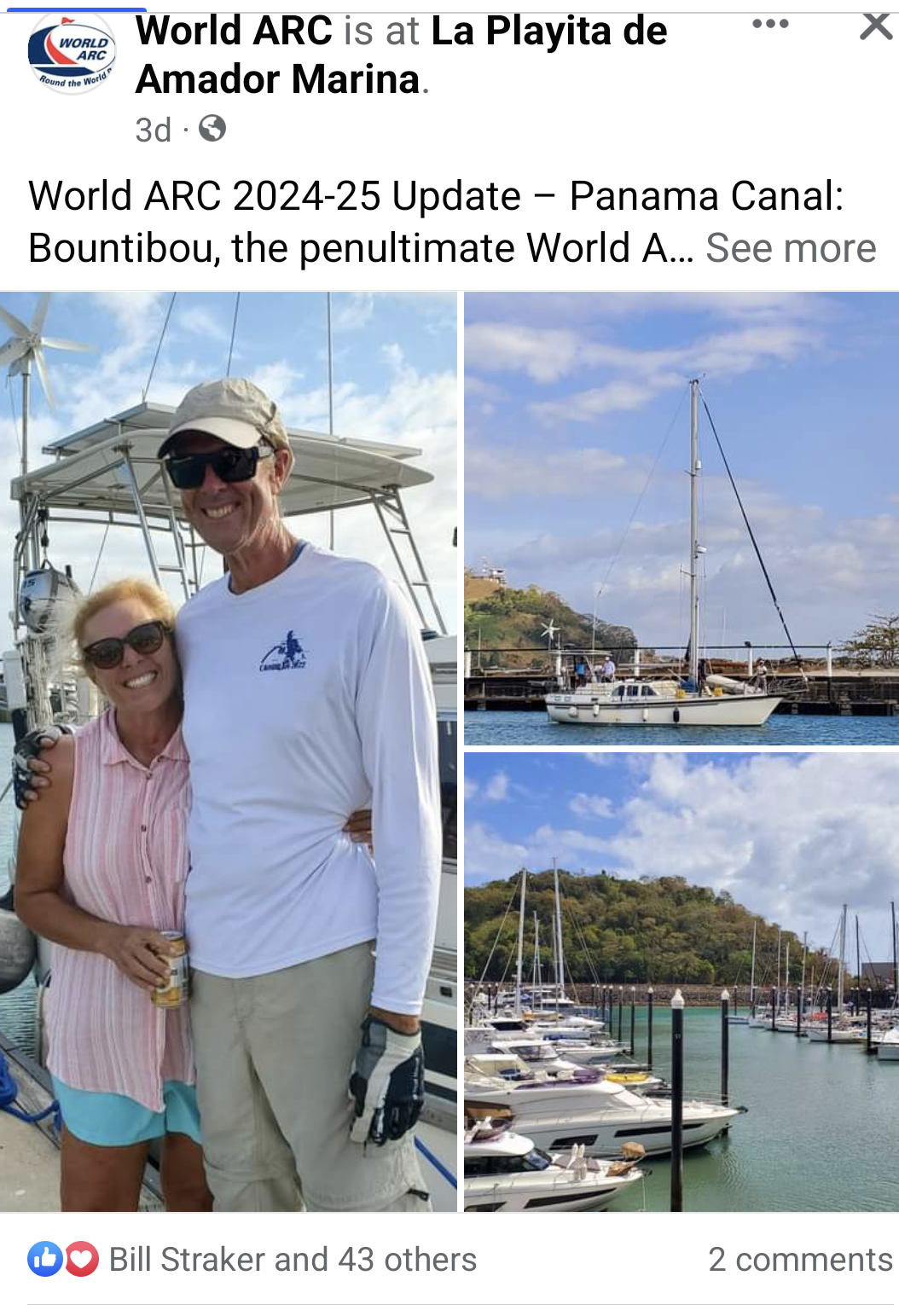

The Bridge of the Americas welcomed us to the Pacific
Later that afternoon Whitson came over to the marina and he and his dad enjoyed cigars in the cockpit. After dinner, we bid him a fond farewell and walked back to Bountibou where we slept very soundly 😊.
